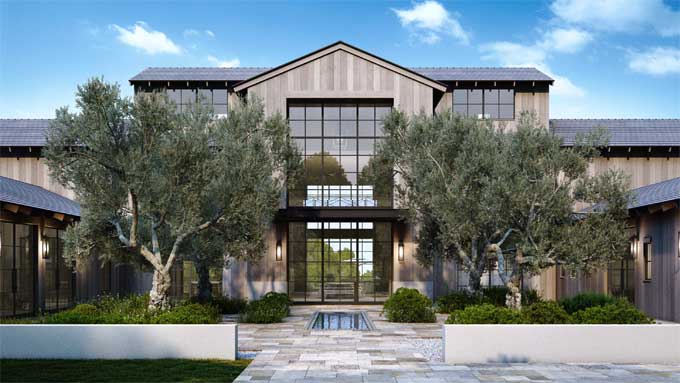How to use 3D Architectural Animation Services for your Business

Architectural projects can be visualized in a variety of ways. Architects and designers often use rudimentary sketches and blueprints, but these images can be hard for the average person to understand. Buildings, houses, and rooms are depicted as photographs in static 3D renderings.
Architects, product designers, furniture companies, & various kinds of sellers all use 3D animations. An animated film's production process is similar to that of a 3D architectural animation. Architects, who excel at planning construction projects but rarely know how to present animated designs, are in the same boat.
However, architects mostly need to visualize their concepts rather than see how actors interact with each other. Many people can create good quality 3D animations, so they outsource the work to professionals.
3D Architectural Animation Workflow
An animator can produce accurate design concepts by describing these factors: project goals, preferred design styles, target audience, and brand guidelines.
Due to the early stages of the workflow, the primary objective is to align the 3D animation. A specific design is approved, and then the collaboration decides on the 3D architectural animation's aesthetic.
Consultation Phase
The process is generally similar regardless of which 3D architectural animation service you choose. When choosing a firm, the consultation phase is the first step. A brainstorming session is held between the animator and the client to explore a few possible designs.
3D modelers analyze the brief and come up with feasible ideas based on client input. Concepts are probably sketched in pencil at this point.
3D Modeling Phase
In the 3D modeling phase, all objects in the animation are created as 3D models. To produce a realistic render, color, material, texture, and dimension accuracy are crucial.
Depending on the nature of the project, the modeling and rendering processes will vary. For a full range 3D model animation service, the animator can draw everything from scratch or purchase readymade models from online marketplaces. Given a tight timeline, it can be quicker to modify purchased models than to create everything from scratch. In some cases, clients may already have 3D models.
As important as the structure itself in the scenery when it comes to highlighting the best view from a particular angle is the scenery.
3D Rendering
A client must approve the CAD files before rendering can begin. Some model revisions are commonly requested by clients. Environmental objects and construction related items may be included in architectural animations, especially in exterior views.
An accurate photo is improved by a skyline that contains sunlight, wind, water, vegetation, and even animals. When given the green light, the 3D architectural animator begins the rendering process, which is largely dependent on the complexity of the 3D modeling. Prior to the final image being ready, the rendering phase is performed several times in a comprehensive workflow.
Colored Proof
An image becomes a 3D rendering as textures, lights, and materials are added by the 3D animator during the colored proof phase. In the frame, all digital objects appear identical to their physical counterparts because of the additional data. Though it is not yet a photorealistic image, it is very close to being lifelike. Adding or removing decorative objects is allowed only if there are minor revisions, such as correcting color.
Grayscale Render
Despite all the main objects being represented in the rendering, grayscales and clay renders lack color and texture since geometry and proportion are the underlying considerations.
Besides considering furniture position and camera angle for interior design visualization, the 3D interior rendering specialist should also take into account furniture placement. It is possible for clients to request revisions to the object selections and perspectives, but anything that requires another 3D modeling process will be charged an additional fee.
Image Rendering
During the next rendering phase of the colored-proof image, shadows and lighting become more important. By analyzing the natural behavior of light and how it interacts with the environment, the process analyzes how light affects the environment. Material, color, and texture differences also affect how light reflects and refracts.
Shadows are determined by the direction and intensity of artificial and natural light sources. Photo editing software is used for fine-tuning color balance, contrast, brightness, and saturation.
To learn more, watch the following video tutorial.
Video Source: Austin Visuals 3D Animation Studio
Timeframe Expectations
Timeframes and costs are affected by a variety of factors. Resolution and frame rate are also crucial, in addition to complexity and the level of detail desired. A 24fps animation includes 24 images played in sequence per second, which takes much longer to render than static images.
It should take 72 hours to render a 24fps animation of a building in full high definition if it takes 3 hours to render a static render. It is also important to consider the video duration; for a minute of architectural animation, you need 1,440 images and 480 hours for production.
3D Animation Cost
The cost of architectural animation services depends on the project's complexity & there is no standard pricing. Despite having identical specifications, one client may pay more than the other, regardless of whether they want the same building rendered. An animator for one of the clients receives a detailed project brief and many 3D models.
Contrary to that, the latter provides only a basic description of the building, meaning the 3D Visualizer artist has an even bigger job. It may be possible to reduce animation costs by providing precise project requirements.
It is possible to get 3D animation for around $100 per second at the bottom of the range. At that price, the quality is subpar, and timeframes are usually longer than ideal. If you want state of the art quality, you can expect to pay $1,000 per second. It is never a good idea to choose either the most affordable or the most expensive option. Your search should instead be focused on midrange prices.



